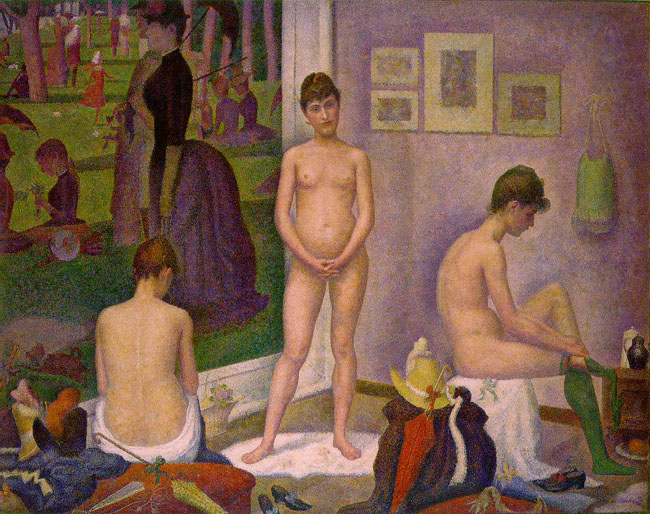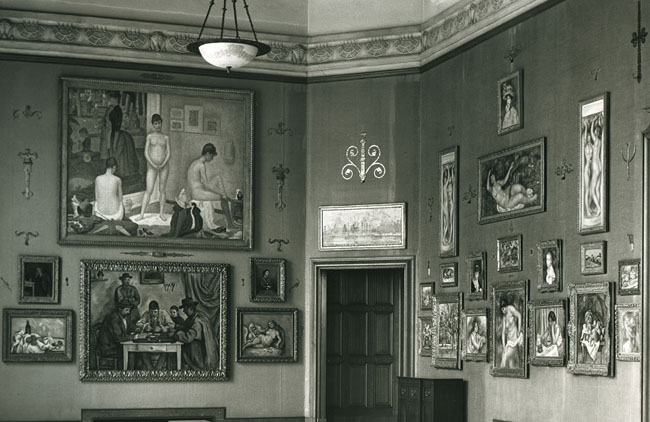CHICAGO – In anticipation of the scariest week of the year, HollywoodChicago.com launches its 2024 Movie Gifts series, which will suggest DVDs and collections for holiday giving.
Lack of Clear Vision, Viewpoint Handcuffs ‘The Art of the Steal’
 Rating: 3.0/5.0 |
CHICAGO – Remember the golden rule? Those who have the gold makes the rules. An illustration of this point is in the new documentary “The Art of the Steal,” a stark reminder of territorial power regarding a valuable art collection.
Albert C. Barnes was a Philadelphia-based visionary when it came to collecting the art of post-modern impressionism in the early 20th century. Having made a fortune as a drug manufacturer, Barnes turned to art appreciation and began to collect the works of Renoir, Cézanne, Matisse, Picasso and other impressionism masters, long before they became the most valuable and prized items in the art world.
Barnes preferred not to break up his collection and wanted it displayed in a certain way in his small educational foundation in Montgomery County, Pennsylvania, several miles from the epicenter of the art scene in Philadephia. This began the struggle, as the wealthy in Philadelphia desired the collection, now worth much more than anyone expected, to reside in the art museums there.
 Photo Credit: The Barnes Foundation |
Barnes died in a automobile accident in 1951, and left specific legal instructions on how to handle his art collection. So began the titanic conflict between the legal wishes of an art collector versus the benefactors, state government and monetary forces that desire to move the works elsewhere.
This is a tricky story. On one hand you have an owner of an art collection, who has been dead nearly 60 years, and the collection is now worth 25 billion dollars. Yep, that’s billion with a “b.” On the other hand, there are forces that want to possess the collection (state and local), remove it from the Barnes Foundation and place it among the tourist attractions in Philadelphia. The film is on the side of Barnes’ explicit wishes, but It’s unclear if Montgomery County even wants it anymore.
The best part of the doc is the background on Albert C. Barnes. The guy was the proverbial man-before-his-time. He collected impressionism years before every art museum in the land slobbered over the style and put it on coffee cups to sell in the gift shop. There was a clipping from a long ago showing of the collection, where the Philadelphia critic sniffed that the paintings were grotesque, and a mess. It was a telling glimpse into how styles change and the world can catch up to a lone, dismissed kook.
The second best aspect was the exploration of what happens to art when a value is placed on it. The collection has become nearly priceless, but does that make it more accessible to the mass human perspective? An exploration of ‘what is art’ is impossible, because each individual has a different point-of-view based on their education, environment and experiences. Commerce in art has perverted the perception and reality of it, and made it simply a way for marketers to influence taste.
 Photo Credit: MAJ Productions, An IFC Films Release |
But the documentary, taking the side of Albert C. Barnes, does not make its argument that cleanly. The filmmakers even add a counterpoint showing the obviously wealthy Montgomery County residents (with tasteful art in the background during their interviews) suing the Barnes Foundation because they want to add a parking lot and art lovers are near their precious lawns. This leads to a shocking countersuit, and both parties have egg on their faces.
And again, in the end, what does ownership mean? In law and order, it means producing a piece of paper after a death that has explicit instructions for the art that Barnes “owns.” The forces against these instructions simply rally to change the law and order. If it happens in the case of overpriced art, it can happen to anything valueless that becomes valuable – land, ideas, even you. It’s still the same old story. Whoever has the gold makes the rules.
 | By PATRICK McDONALD |


